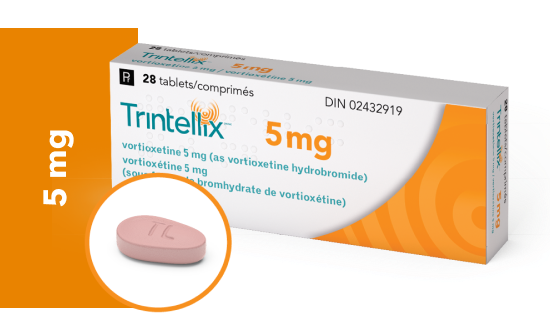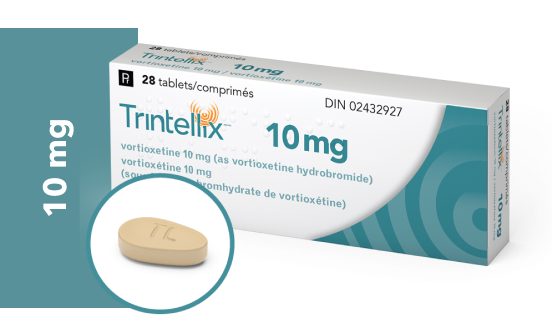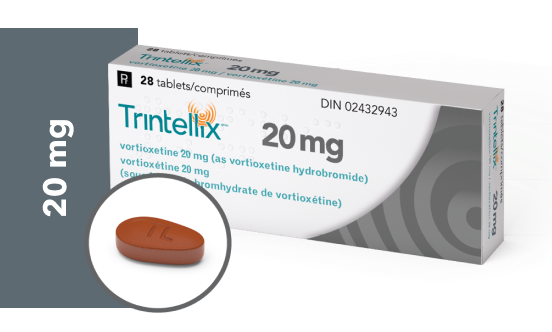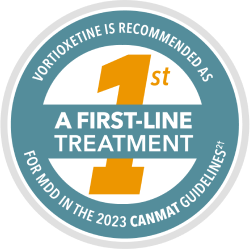Dosing
Convenient Once-Daily Dosing1
Decrease to a minimum of 5 mg once daily may be considered for patients who do not tolerate higher doses.1
STARTING AND RECOMMENDED DOSE
10 mg once daily in adults <65 years of age.1
Depending on individual patient response, the dose may be increased to a maximum of 20 mg once daily, as tolerated.1
Patients ≥65 years of age
- 5 mg once-daily starting dose
- Caution is advised when treating elderly patients with doses >10 mg/day due to the limited efficacy and safety data from patients of 65 years of age or older who were treated with these doses in controlled clinical trials.1
May be taken with or without food1
Pharmacokinetics
Absorption
TRINTELLIX (vortioxetine) is slowly but well absorbed after oral administration and the peak plasma concentration is reached within 7 to 11 hours. Following multiple dosing of 5, 10 and 20 mg/day, mean Cmax values of 9 to 33 ng/mL were observed. The absolute bioavailability is 75%. No effect of food on the pharmacokinetics was observed.
Distribution
The mean volume of distribution is 2,600 L, indicating extensive extravascular distribution. Vortioxetine is highly bound to plasma proteins (98-99%) and the binding appears to be independent of vortioxetine plasma concentrations.
Metabolism
TRINTELLIX (vortioxetine) is extensively metabolized, primarily through oxidation and subsequent glucuronic acid conjugation.
Elimination
The mean elimination half-life and oral clearance are 66 hours and 33 L/h, respectively. Approximately 2/3 of the inactive vortioxetine metabolites are excreted in the urine and approximately 1/3 in the faeces. Only negligible amounts of unchanged vortioxetine are excreted in the urine.
CANMAT=Canadian Network for Mood and Anxiety Treatments
* Not available in Quebec.
† See guidelines for complete recommendations.
References: 1. TRINTELLIX Product Monograph. Lundbeck Canada Inc., May 27, 2024. 2. Lam RW, et al. Canadian Network for Mood and Anxiety Treatments (CANMAT) 2023 Update on Clinical Guidelines for Management of Major Depressive Disorder in Adults. Can J Psychiatry 2024:1-47.



